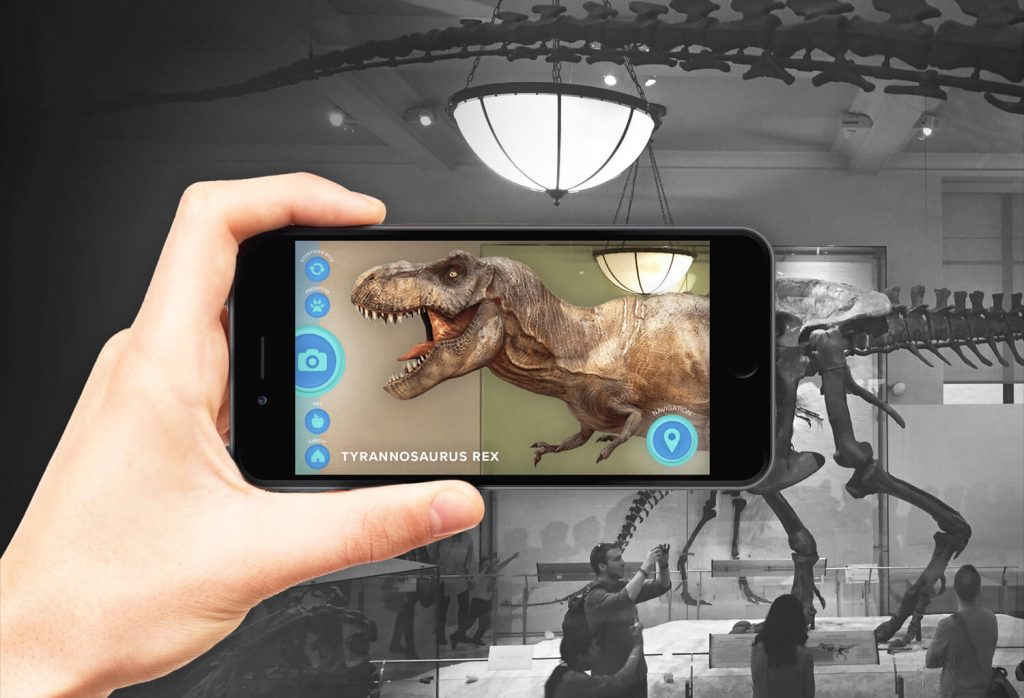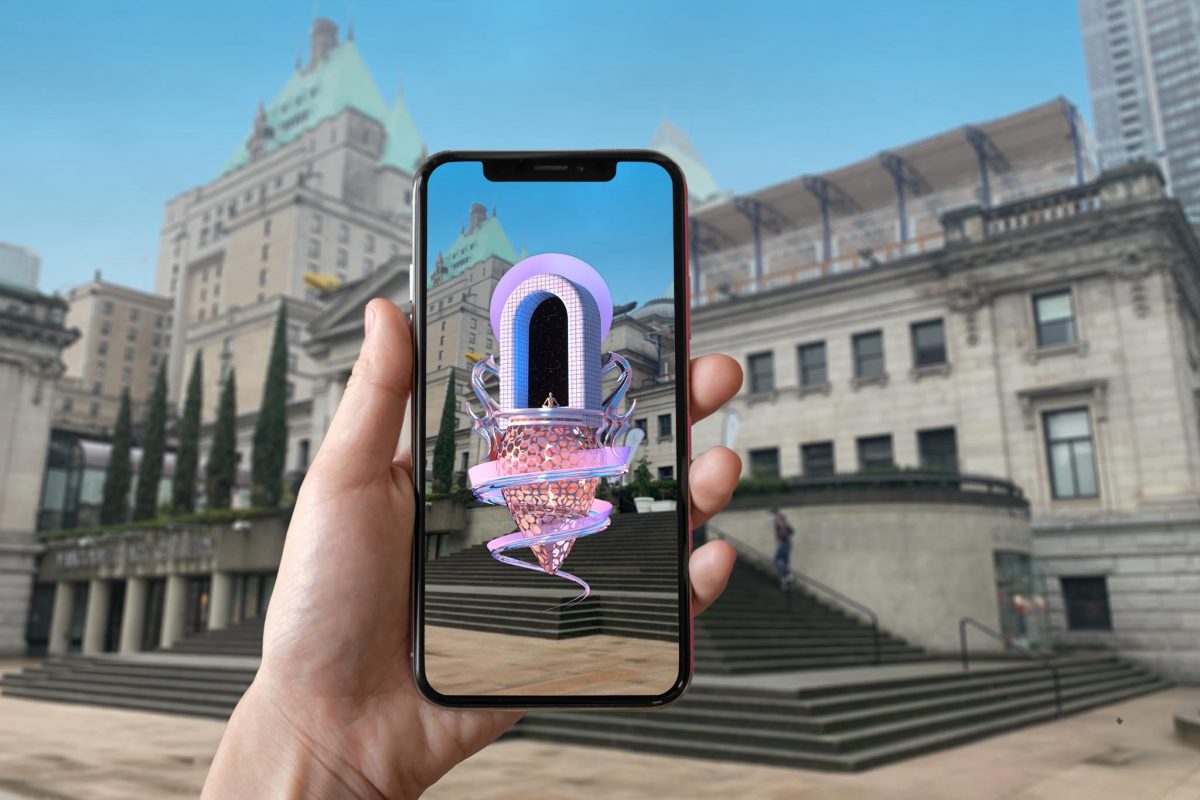Augmented reality (AR) vs. Virtual reality (VR)
It might still be confusing for some what the difference between AR and VR is, so here is a little explanation.
Virtual Reality gives complete immersion in a different reality, in this sense it replaces totally what the user sees. As such VR requires specialist technology, such as headsets, controllers and sensors. Whereas AR shows reality and an altered version side by side most often by using a smartphone, or tablet with downloadable apps. Therefore, AR only adds to what the user can already see instead of replacing it completely. In other words, the user only needs to stand in front of a scene and hold up their device. It will show them an altered version of reality [1].
AR art in museums
More and more museums as well as other institutions have started using this concept in their exhibitions, to bring a sense of reality or to provide better explanations. AR gives an opportunity to be more interactive and engaged, and to bring objects or scenes to life [2]. It also provides the museum something new to already existing expositions, attracting past as well as new audiences like children, that will have more fun in visiting. For example, imagine being able to see an animated 3D picture of a dinosaur, it would make the visit a lot more interesting.
Here is a list of some museums that are using AR in their collections, note that many more are establishing it:
- Musée national d’Histoire, in Paris, lets you come face to face with extinct digital animals.
- The Art Gallery of Ontario, in Toronto, have reimagined the paintings in a modern context where visitors can see the ‘new’ paintings using their phones.
- The Smithsonian institution, in Washington DC, displays skeletons of animals but with AR you can now see how the animals would have looked with skin and muscle and even how they moved with animations.

AR art wherever

A very positive benefit of AR art is that it is portable everywhere and shareable [4]. AR has come further recently and it can now be available anywhere be it in your house or outside. There are no limits on where you can show this type of art, during the pandemic it developed greatly and was made available at home as well as outside. The most popular example of AR outside would be the game Pokemon GO where you can find pokemons by walking around your neighborhood. Looking more at the art scenes, the Vancouver Mural Festival set an AR exhibit through the city during the pandemic, featuring the work of local artists [5]. This way it made it safe for everyone to view art while respecting covid measures.
It is also now available to display AR art in your home and accessible to everyone nowadays as you just need a smartphone and an app. Being able to view art in your house was developed during the pandemic so as to enable viewers to appreciate art while stuck at home, they can position digital artworks onto surfaces inside their house transforming your house into an art gallery [4].
The future of AR
AR art offers an entirely new concept of viewing art and in my opinion one that could be far more interesting and engaging. It is also being developed in other fields and I believe we will hear a lot more from it in the coming years, as it will become a useful tool.
Have you ever seen AR art before? What is your take on it? Did you like it and why? Do you think it brings something to art?
References:
[1]https://www.museumnext.com/article/how-museums-are-using-augmented-reality/
[2]https://www.museumnext.com/article/augmented-reality-takes-museum-goers-inside-rembrandt-painting/
[3]https://www.queppelin.com/2018/05/how-we-used-augmented-reality-to-bring-museums-to-life/
[4] https://www.bbc.com/news/entertainment-arts-56123958
[5] https://www.citynews1130.com/2021/02/14/vancouver-art-augmented-reality/


Hi Manon,
thank you for your post! I actually haven’t seen AR being used this way in museums and art before, so this was a very interesting read. Personally, I think it is great to see how the cultural sector is starting to increasingly embrace digitalization. AR in museums is a perfect example of how technology can help delivering better value as it definitely allows for a more engaging experience for visitors and will make museums more fun to visit.
I also agree with you that we will probably hear a lot more from AR in the coming years. One related field that came to my mind, in which AR could have a great potential as well, is education. Text books and other learning materials could for example in the future be accompanied by AR components as well, similarly to how the museums you mentioned in your post are doing it at the moment. This could allow for a more interactive and valuable learning experience for students. All in all, I am looking forward to seeing more and more applications of AR in the future.